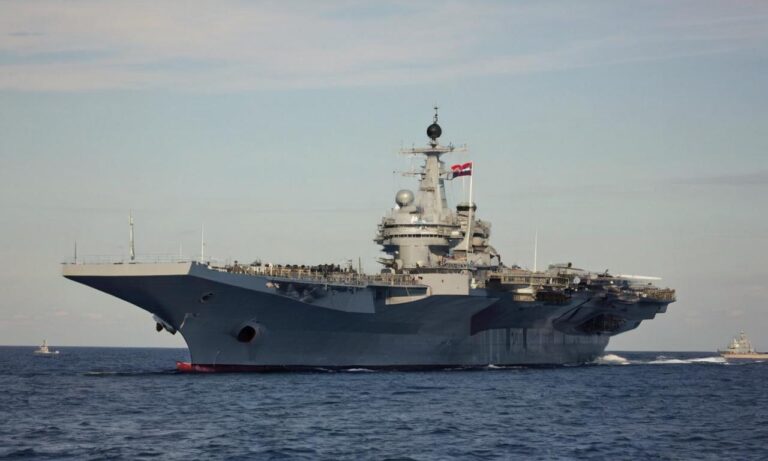In the realm of naval power and military capabilities, the question of whether Russia possesses an aircraft carrier is one that often captures the curiosity of defense analysts and enthusiasts alike. Let’s delve into this topic to understand the current status of Russia’s aircraft carrier fleet and its significance in the geopolitical landscape.
The Historical Context
Russia’s involvement in naval aviation dates back to the Soviet era, where it developed and operated aircraft carriers. The most notable of these carriers was the Admiral Kuznetsov, commissioned in the late 1980s. The collapse of the Soviet Union, however, led to a decline in Russia’s naval capabilities, including its aircraft carrier program.
The Admiral Kuznetsov
The Admiral Kuznetsov remains Russia’s only aircraft carrier as of now. This powerful vessel is a unique blend of aircraft carrier and missile cruiser, equipped with a ski-jump ramp for aircraft takeoff. While it has played a role in various military operations, it has also faced challenges, including technical issues and limited aircraft capacity.
Modernization Efforts
Russia has expressed intentions to modernize and upgrade its naval capabilities, including the development of a new generation of aircraft carriers. These plans underscore the country’s commitment to maintaining a formidable naval presence in the 21st century. However, the specific timelines and details of these projects remain subjects of speculation and scrutiny.
Geopolitical Implications
The presence of aircraft carriers in a nation’s naval arsenal is often viewed as a symbol of power projection and a strategic tool in international relations. For Russia, possessing a capable aircraft carrier signifies its ability to assert influence in key regions and participate in global security initiatives.
The Challenges
Building and maintaining aircraft carriers come with substantial challenges, both technologically and financially. The complexities of modern naval warfare, coupled with the evolving threat landscape, necessitate continuous innovation and investment. Russia’s pursuit of advanced carrier capabilities is not without obstacles, and navigating these challenges will shape the future of its naval prowess.
The Future Outlook
As geopolitical dynamics continue to evolve, Russia’s stance on naval power and its commitment to enhancing its aircraft carrier capabilities will undoubtedly be closely monitored. The strategic decisions made in this realm will have ripple effects on the global balance of power and regional security.
In summary, Russia currently possesses the Admiral Kuznetsov as its sole aircraft carrier, with ambitions to modernize and expand its naval capabilities. The geopolitical significance of this pursuit is profound, reflecting the broader dynamics of international relations and military strategy. As the world watches developments in Russia’s naval program, the impact on global security and power dynamics remains a subject of ongoing analysis.
Frequently Asked Questions
Before we conclude our exploration of Russia’s aircraft carrier capabilities, let’s address some common questions that often arise regarding this topic.
1. Are there any plans for a new Russian aircraft carrier?
Russia has expressed intentions to develop a new generation of aircraft carriers as part of its modernization efforts. However, specific details, including timelines and project specifics, remain speculative, and the actual implementation is subject to various factors.
2. What challenges does Russia face in modernizing its aircraft carrier fleet?
The modernization of aircraft carriers involves significant technological and financial challenges. Navigating the complexities of modern naval warfare and meeting evolving threats demand continuous innovation and substantial investment. Russia’s pursuit of advanced carrier capabilities is not without hurdles in this regard.
3. How does the Admiral Kuznetsov compare to other nations’ aircraft carriers?
The Admiral Kuznetsov, Russia’s sole aircraft carrier, has a unique design that combines aircraft carrier and missile cruiser features. While it has played a role in military operations, its capabilities and limitations differ from carriers in other naval fleets globally.
| Country | Number of Aircraft Carriers | Notable Carriers |
|---|---|---|
| Russia | 1 (Admiral Kuznetsov) | Admiral Kuznetsov |
| United States | Multiple | USS Nimitz, USS Gerald R. Ford |
| China | Growing Fleet | Shandong, Liaoning |
4. What role do aircraft carriers play in global geopolitics?
Aircraft carriers serve as symbols of power projection and are strategic tools in international relations. For Russia, possessing a capable aircraft carrier is significant for asserting influence in key regions and participating in global security initiatives, shaping geopolitical dynamics.
5. How will Russia’s aircraft carrier program impact regional security?
The developments in Russia’s naval program, particularly in the realm of aircraft carriers, will have ripple effects on regional security. As the country modernizes its fleet, neighboring nations and geopolitical rivals will likely adjust their strategies, influencing the overall balance of power in the region.






